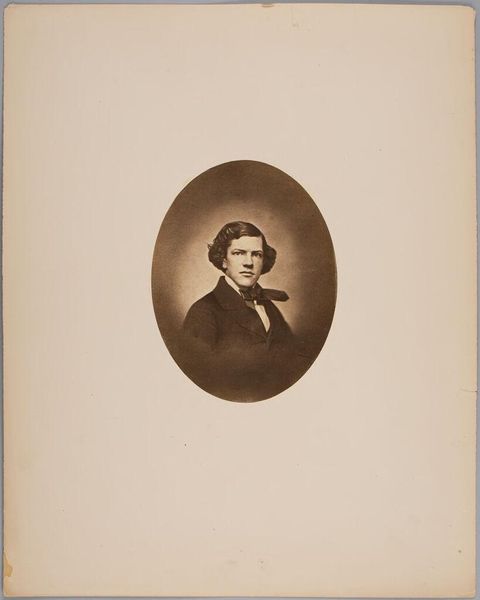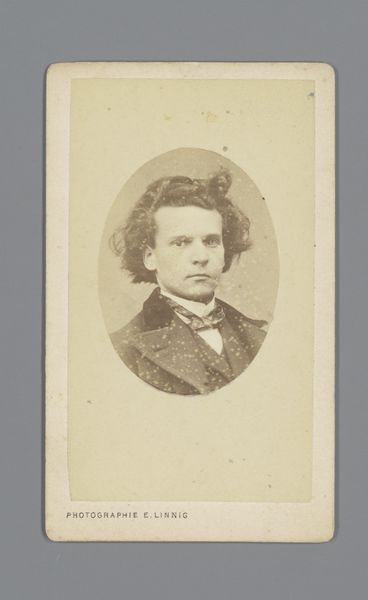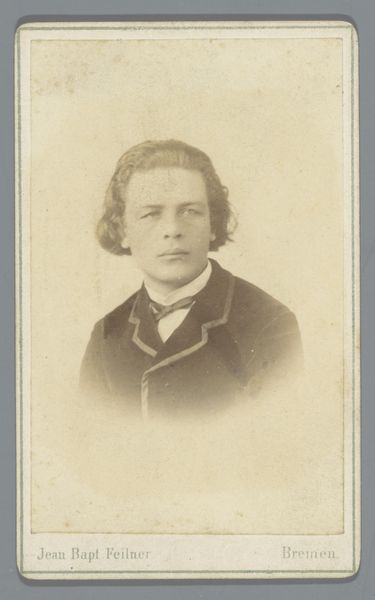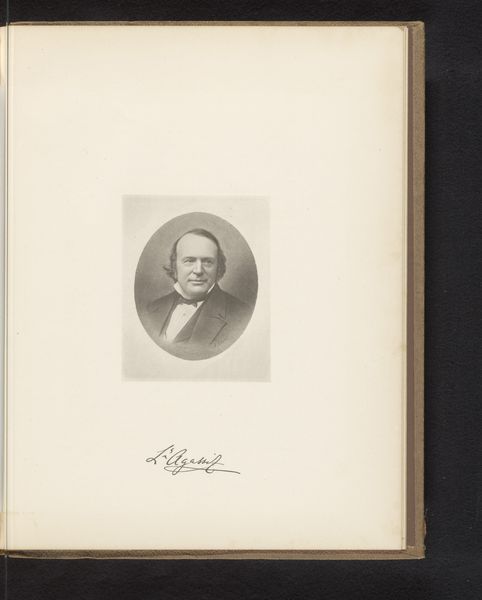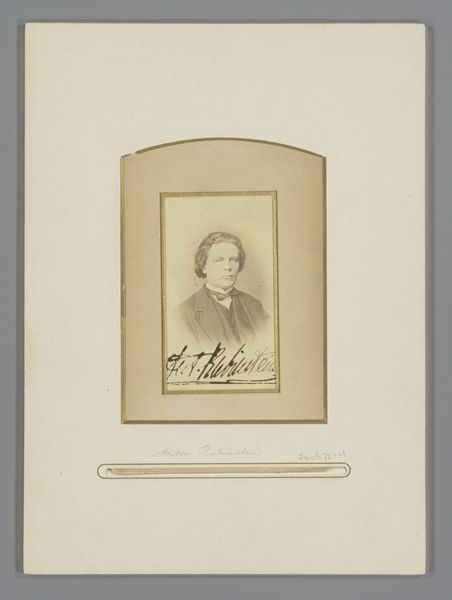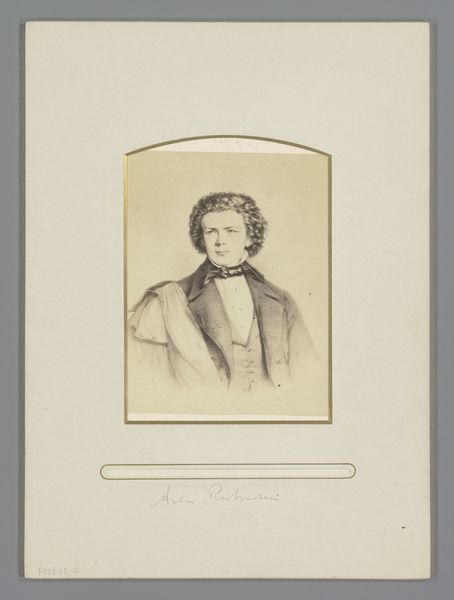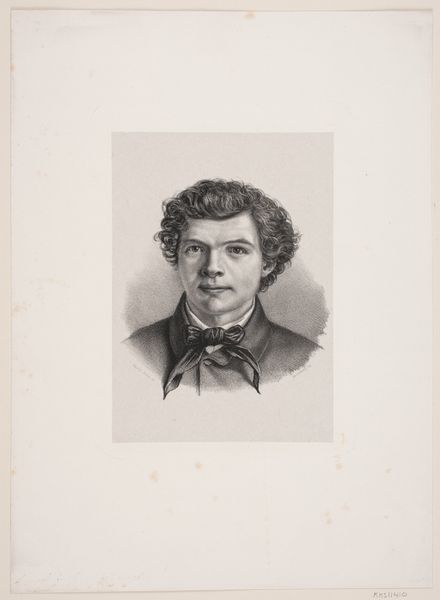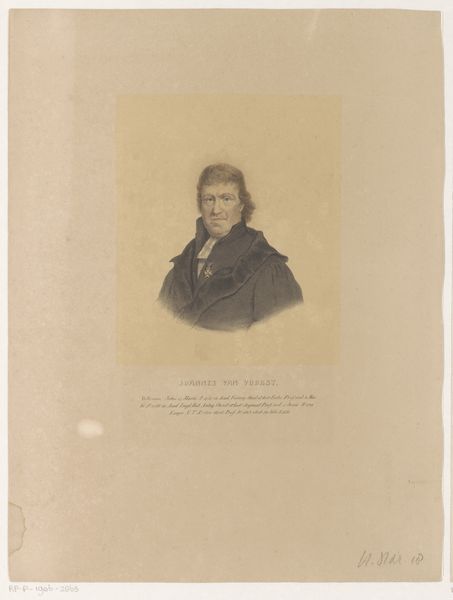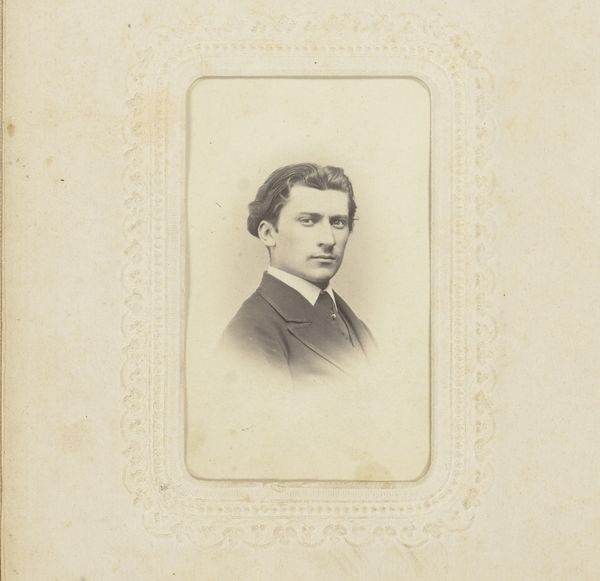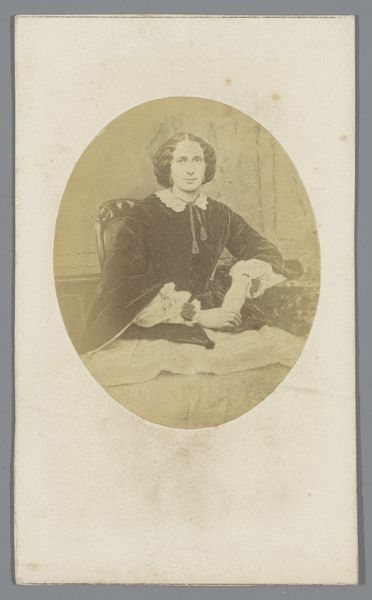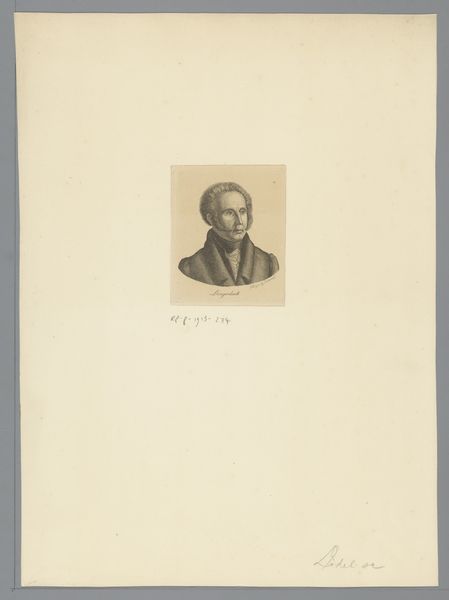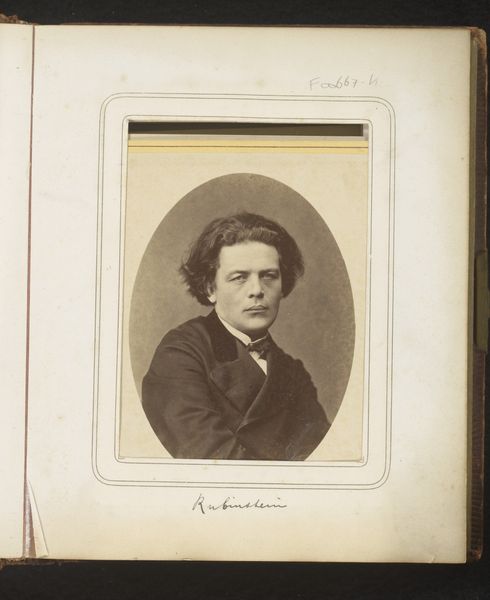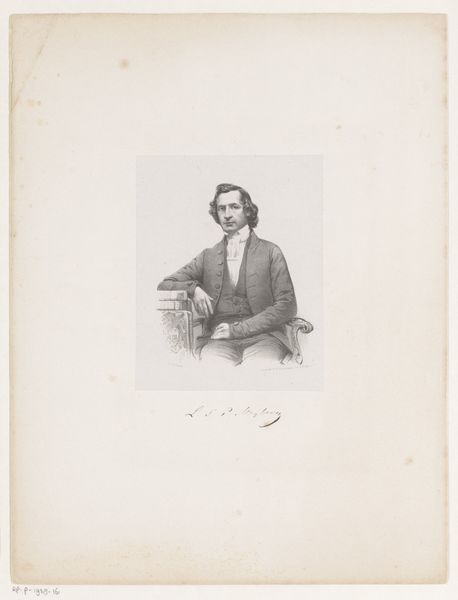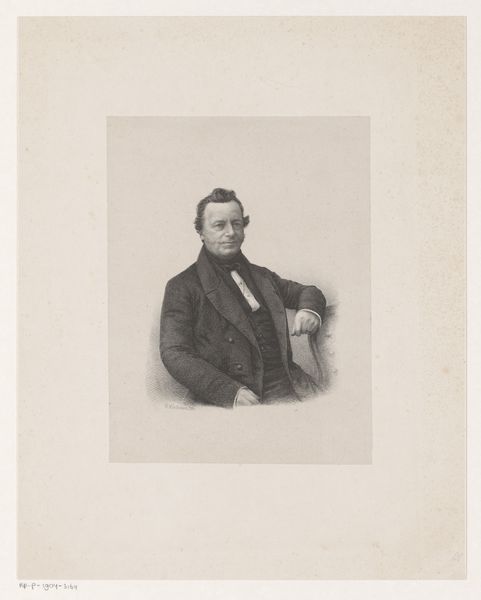
Dimensions: height 135 mm, width 95 mm
Copyright: Rijks Museum: Open Domain
Editor: So this is a portrait of the pianist Anton Rubinstein, created sometime between 1880 and 1894, using photography on paper. It’s a pretty straightforward image, very formal, but something about his expression feels a little melancholy. What do you see in this piece? Curator: It's more than just a portrait; it’s a document reflecting the complex societal pressures and expectations placed upon artists, especially those from marginalized communities in late 19th-century Europe. As a Jewish man in Russia, Rubinstein occupied a precarious position. Consider how this photograph, likely commissioned to project a specific image, intersects with his identity. How much of "Anton Rubinstein" the person, do you think, is in the photograph, or does it serve the prevailing ideas of virtuosity? Editor: That's interesting. I hadn't thought about the way his identity might play into it. It's true, it's hard to see the man behind the image. What do you mean? Curator: Well, what elements stand out to you? The way he's dressed? His hair? Think about how carefully curated these details would have been to align with societal expectations of a successful musician, while potentially downplaying his Jewish heritage in a society rife with antisemitism. To me, it looks posed, calculated and controlled, and to be wary of power. Where and from whom did this power stem? Who was his audience? Editor: So, it’s almost a performance of identity, trying to navigate those different worlds? A tension between fame, artistic expression, and cultural assimilation? Curator: Exactly. Even his “melancholy” gaze, as you described it, can be interpreted as a quiet resistance, or perhaps the weight of these conflicting pressures. Think of it as a visual negotiation between self and society. What have you found most interesting about Rubinstein as we explored this piece together? Editor: I hadn't considered how much identity and social pressure could be embedded in what seems like a simple portrait. That gives me a lot to think about. Curator: Me too. Thinking about art as more than image has never failed to fascinate me.
Comments
No comments
Be the first to comment and join the conversation on the ultimate creative platform.
